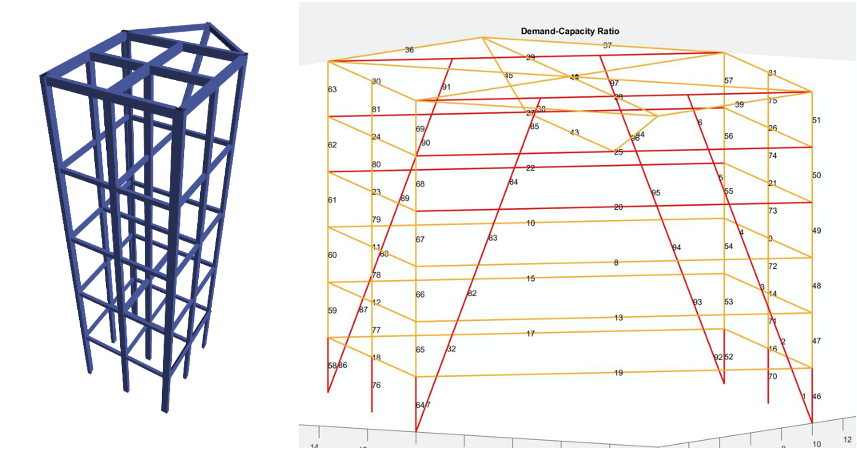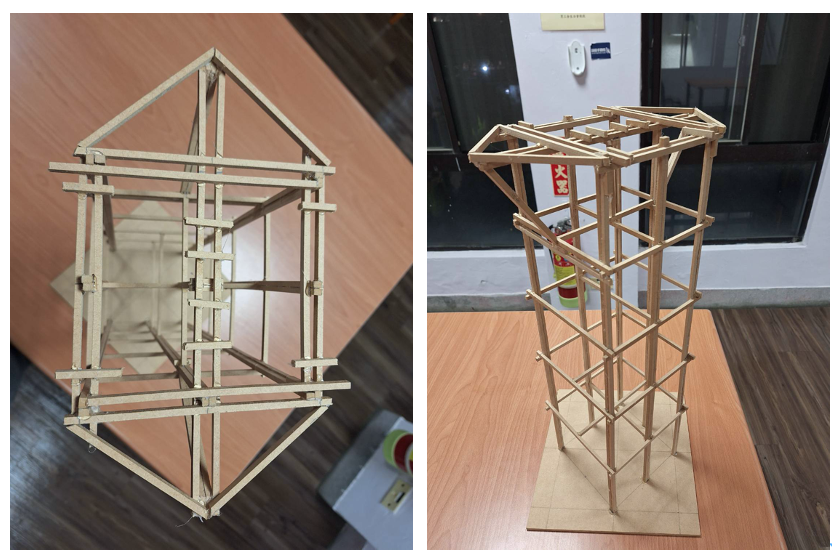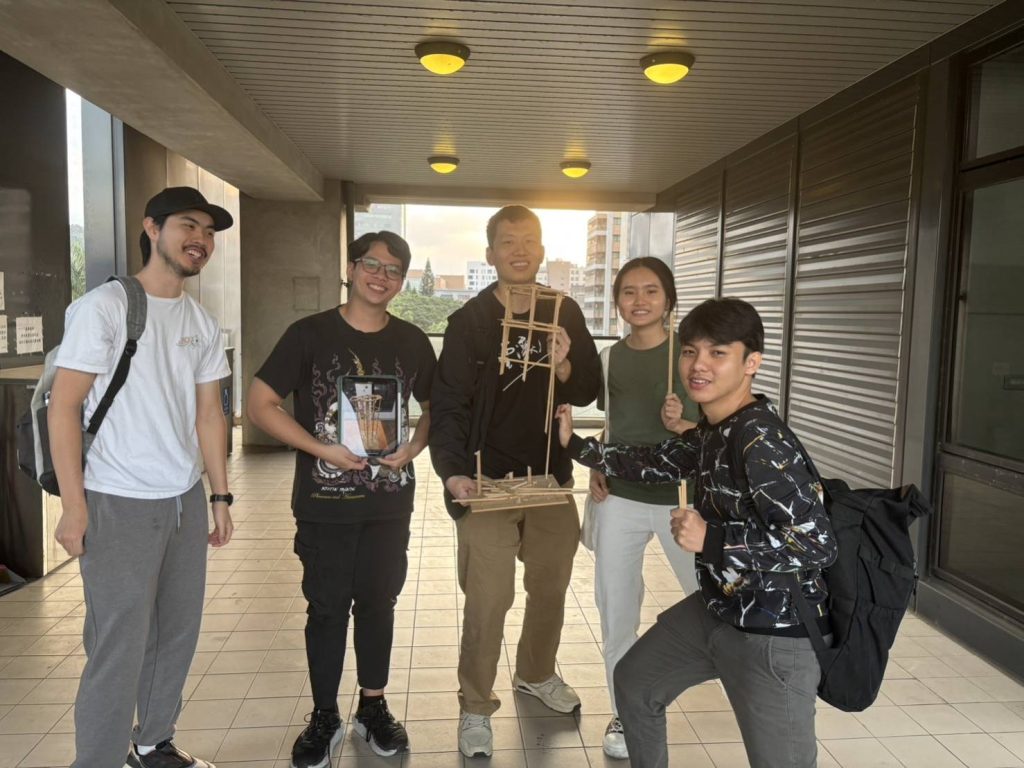土木三 Yazidane Hakim
I am Yazidane Hakim, currently a second-year Civil Engineering student. I’ve completed the Keystone B course last semester, and I’m excited to share my thoughts, experiences, and feelings on taking the course. This course has been a thrilling journey for me, and I hope my insights can offer value to those considering or currently enrolled in similar courses.
Course Overview
Keystone B: Earthquake Resistant Tower is an advanced course designed for NTUCE sophomores with a focus on structural and earthquake engineering. The course delves into the critical elements of seismic-resistant structures through a blend of theoretical study and practical application. Students enrolling in the course are divided into groups of four to five members, each tasked with presenting two towers made from a combination of wood and glue. These towers are tested for sustainability in both the first and second halves of the semester. The primary objective is to develop an optimal building structure design that can withstand earthquakes, with all groups given the same amount and types of materials. Groups whose towers demonstrate better sustainability achieve higher grades.
The course includes weekly presentations from each team to update the professor on their progress in designing their tower models. Each week, the professor provides new material to support the goal of creating the most sustainable tower design. This process involves using software, mainly ETABS, for numerical analysis to obtain properties for each tower member and improve the current design. ETABS, though initially complex, proved to be an invaluable tool for understanding and enhancing the structural dynamics of our towers.
Experiences and Journeys
In the first half of the semester, my group of five, including myself, struggled initially with the topic and the ETABS interface, which seemed complicated. Adapting to the course flow was challenging. We decided to innovate for our first tower, planning to create a flexible and movable surface to reduce the inertia and moment of the tower during shaking tests. Unfortunately, during the first test, our platform was too thin, and the supporting columns were not strong enough, leading to a significant failure.

ETABS Tower Model Analysis
After the disappointing results of the first half, our group decided to avoid risks and opted for a simpler tower design. The remaining weeks before the second half were a struggle, as the topics became more advanced, involving many theories to increase the final Demand Capacity Ratio (DCR). Our simpler design yielded an acceptable DCR result, though it was not exceptional.

Our Group’s Tower Final Design
Key Takeaways
The course was an incredible journey of personal and academic growth. I gained in-depth knowledge of seismic design principles and Structural Dynamics, which enhanced my understanding and ability to design earthquake-resistant structures. The rigorous assignments pushed me to think critically and approach engineering problems innovatively. Additionally, the practical projects, such as building and testing the towers, honed my practical skills and my ability to apply theoretical knowledge to real-world challenges.
One of the highlights of the course was the collaborative learning environment. Working in teams fostered a spirit of cooperation and collective problem-solving, which was crucial for our success. The feedback and guidance from our experienced instructors were invaluable in shaping my understanding and practical skills. Moreover, the emphasis on real-world applications ensured that the knowledge we gained was directly applicable to practical engineering scenarios.


Group Pictures After Test
However, the course was not without its challenges. Balancing the intensive coursework with other commitments required effective time management and prioritization. I found that setting a regular study schedule, and breaking down tasks into manageable parts were essential strategies for overcoming these challenges. Staying motivated by keeping sight of my long-term goals and celebrating small achievements along the way also helped me navigate the course successfully.
Looking ahead, completing Keystone B has inspired me to pursue further learning and development in structural and earthquake engineering. My future plans include enrolling in advanced courses, applying the skills I’ve acquired to significant projects, and exploring career opportunities in this field. I am confident that the foundation laid by this course will be instrumental in achieving these aspirations. I would definitely recommend this course to anyone interested in structural engineering. Although the content is relatively difficult, it will significantly improve one’s technical skills and understanding of structural dynamics. The experience is challenging but immensely rewarding.




